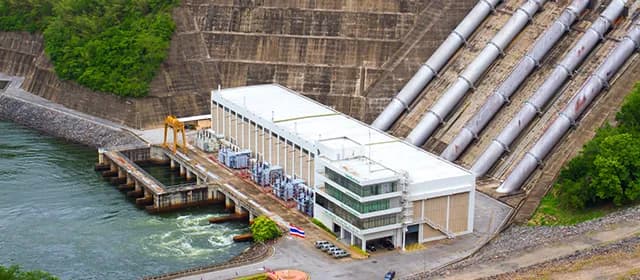In the dynamic world of oil and gas, storage plays a crucial role in maintaining the smooth operation of the industry. With vast amounts of oil and gas being produced, transported, and consumed globally, the need for reliable and efficient storage solutions has never been more important.
In this blog, we will explore the key aspects of oil and gas storage services, including their importance, types of storage facilities, and the benefits they bring to the overall supply chain. Whether you are an industrial leader or someone seeking information about the topic, this blog will provide you with valuable insights into the world of oil and gas storage.
What is an Oil and Gas Storage Service?
Oil and gas storage services play a critical role in the industry, helping to maintain a balance between supply and demand. Companies rely on storage facilities to manage price fluctuations by storing or withdrawing oil and gas as needed. According to Kings Research, the Global Oil and Gas Storage Service Market is anticipated to reach USD 1.53 billion in revenue by 2030.
The significance of oil and gas storage services cannot be emphasized enough. These facilities serve as a vital buffer between production and consumption, ensuring a consistent supply of oil and gas even when demand is unstable. By storing excess production during periods of low demand and releasing it when demand increases, storage facilities help stabilize the supply and minimize price volatility.
Types of Oil and Gas Storage Service Facilities:
Oil and gas storage service facilities come in various forms, each designed to cater to specific needs and requirements. Let's explore some of the common types:
- Aboveground Storage Tanks (ASTs): ASTs are large steel containers that store oil and gas above the ground. They are widely used due to their versatility, cost-effectiveness, and ease of maintenance. ASTs can store various types of petroleum products, including crude oil, gasoline, diesel, and natural gas liquids (NGLs).
- Underground Storage Tanks (USTs): USTs are typically used for storing petroleum products, including gasoline and diesel, below the ground. They are often found at fuel stations and other commercial facilities. USTs offer advantages such as space optimization, environmental protection, and reduced risk of theft or vandalism.
- Salt Caverns: These are natural formations created by dissolving salt deposits underground. These caverns can be repurposed for storing oil and gas due to their excellent structural integrity and impermeable nature. Salt cavern storage provides high-pressure storage capacity and is commonly used for large-scale strategic reserves.
Benefits of Oil and Gas Storage Service
Oil and gas storage service offers numerous benefits to the entire supply chain, including:
- Ensuring Energy Security: By maintaining strategic reserves, countries can mitigate the impact of supply disruptions and unforeseen events, ensuring energy security and stability.
- Managing Seasonal Demand Fluctuations: Storage facilities allow companies to meet peak demand during specific seasons, such as winter, when energy consumption typically increases.
- Facilitating International Trade: Oil and gas storage terminals located near ports enable efficient import and export operations, promoting international trade and enhancing energy market competitiveness.
- Enhancing Operational Flexibility: With storage facilities, companies can optimize production levels, respond to market conditions, and improve overall operational flexibility.
How to Choose the Perfect Oil and Gas Storage Service?
Choosing the perfect oil and gas storage service is crucial for your business's efficiency and resource management. To make the right decision, consider factors such as storage capacity, flexibility, safety compliance, location, accessibility, security measures, maintenance, financial stability, reputation, cost, and contract terms. Evaluate the provider's ability to meet your current and future needs while adhering to safety regulations and industry standards.
Additionally, assess their location concerning your operations, their security protocols, facility maintenance, and their reputation in the industry. Compare costs and contract terms to ensure they align with your budget and long-term goals. By carefully considering these factors, you can select an oil and gas storage service that optimizes your operations and safeguards your assets.
How to Maximize the Safety of Oil and Gas Storage?
Here are some key tips to enhance safety in oil and gas storage:
- Implement a comprehensive safety program: Establish a robust safety program that includes frequent employee training, detailed equipment inspections, and clear safety procedures that everyone follows. This program should cover all aspects of storage operations, including handling, transportation, and emergency response.
- Collaborate with local emergency response organizations: Develop a strong relationship with local emergency response organizations to ensure effective communication and coordination in case of emergencies. Regularly engage in discussions and drills to enhance preparedness and response capabilities.
- Invest in proper equipment and infrastructure: Ensure that storage tanks, pipelines, and other equipment meet industry standards and undergo regular maintenance and inspections Implement safety features such as leak detection systems, fire suppression systems, and proper ventilation to minimize risks.
- Promote a safety culture: Foster a culture of safety by encouraging open communication, reporting of near-misses, and active participation in safety initiatives. Empower employees to identify and address potential hazards promptly.
- Provide adequate training: Train employees on proper handling procedures, emergency response protocols, and the use of personal protective equipment (PPE) Regularly update training programs to incorporate new safety practices and regulations.
- Implement hazardous material management: Follow proper procedures for the storage, labeling, and disposal of hazardous materials Implement spill containment measures and have appropriate response plans in place.
- Regular inspections and audits: Conduct regular inspections and audits to identify potential safety hazards and ensure compliance with safety regulations. Address any issues promptly to maintain a safe storage environment.
- Stay informed and updated: Stay up-to-date with industry best practices, safety guidelines, and regulatory requirements. Regularly review and update safety protocols to align with the latest standards.
Final Takeaway on Oil and Gas Storage Service
In the rapidly evolving landscape of the oil and gas industry, storage services play a critical role in ensuring the smooth functioning of the supply chain. From aboveground and underground storage tanks to salt caverns, each type of storage facility caters to specific needs, ensuring the availability of oil and gas during fluctuations in demand. As global energy demand continues to rise, the importance of efficient and reliable storage solutions becomes increasingly apparent.
So, what does the future hold for oil and gas storage services? How can technological advancements further enhance their efficiency and sustainability? These are questions that industry leaders and individuals interested in the topic should ponder. As innovation continues to shape the oil and gas sector, we can expect storage services to evolve, enabling the industry to adapt to changing demands and contribute to a more secure and sustainable energy future.




